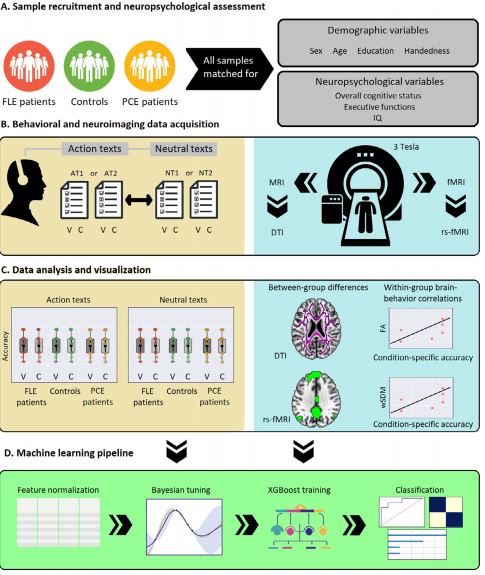09 de abril 2021
Abstract:
The pressing call to detect sensitive cognitive markers of frontal lobe epilepsy (FLE) remains poorly addressed. Standard frameworks prove nosologically unspecific (as they reveal deficits that also emerge across other epilepsy subtypes), possess low ecological validity, and are rarely supported by multimodal neuroimaging assessments. To bridge these gaps, we examined naturalistic action and non-action text comprehension, combined with structural and functional connectivity measures, in 19 FLE patients, 19 healthy controls, and 20 posterior cortex epilepsy (PCE) patients. Our analyses integrated inferential statistics and data-driven machine-learning classifiers. FLE patients were selectively and specifically impaired in action comprehension, irrespective of their neuropsychological profile. These deficits selectively and specifically correlated with (a) reduced integrity of the anterior thalamic radiation, a subcortical structure underlying motoric and action-language processing as well as epileptic seizure spread in this subtype; and (b) hypoconnectivity between the primary motor cortex and the left-parietal/supramarginal regions, two putative substrates of action-language comprehension. Moreover, machine-learning classifiers based on the above neurocognitive measures yielded 75% accuracy rates in discriminating individual FLE patients from both controls and PCE patients. Briefly, action-text assessments, combined with structural and functional connectivity measures, seem to capture ecological cognitive deficits that are specific to FLE, opening new avenues for discriminatory characterizations among epilepsy types.


